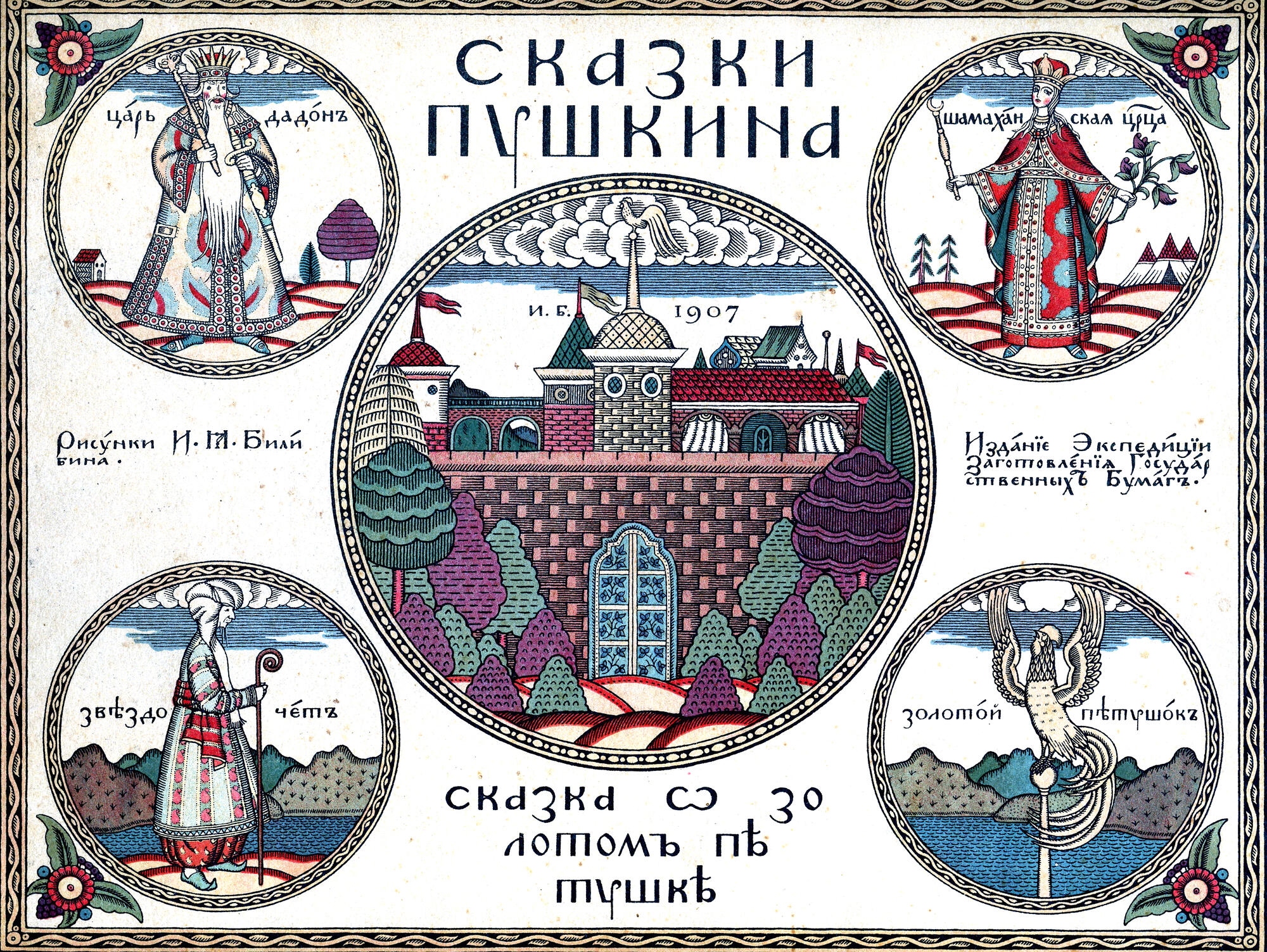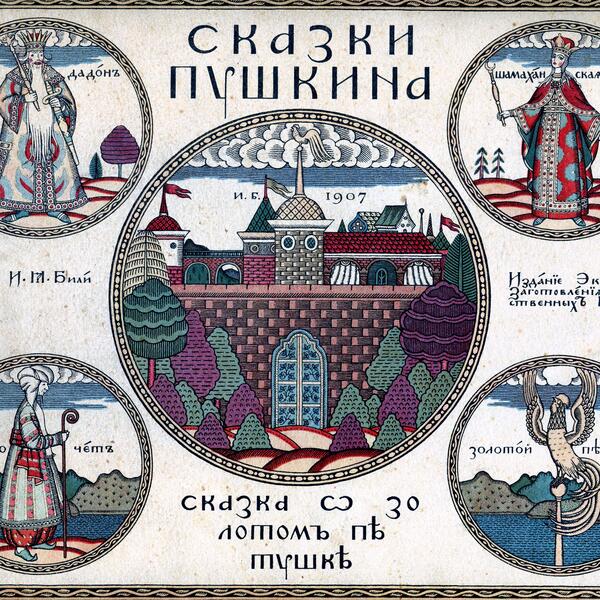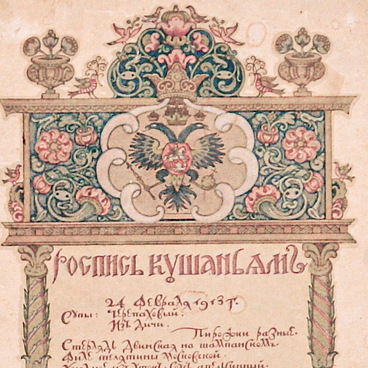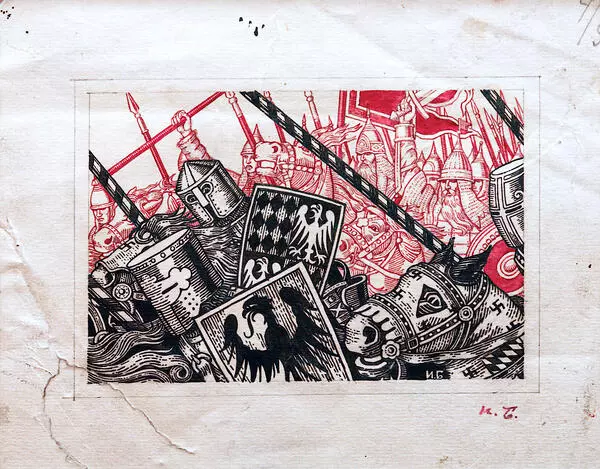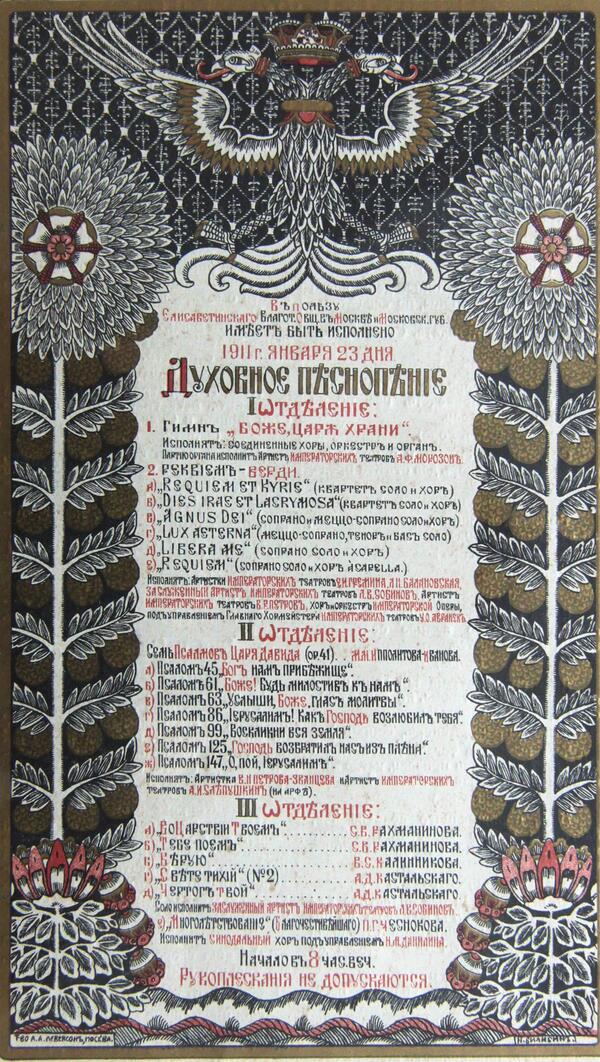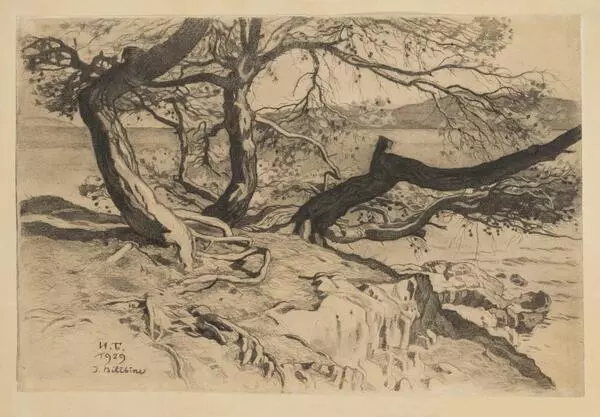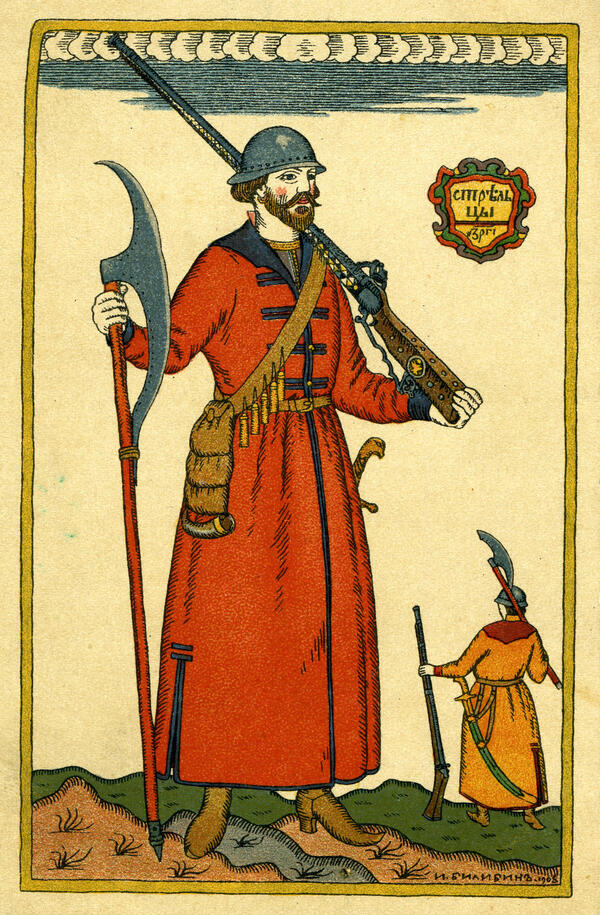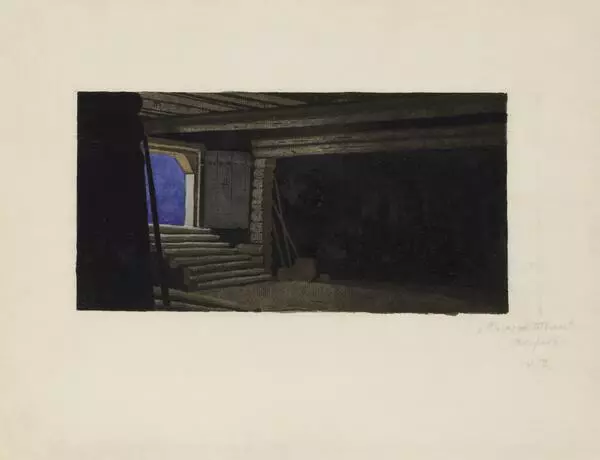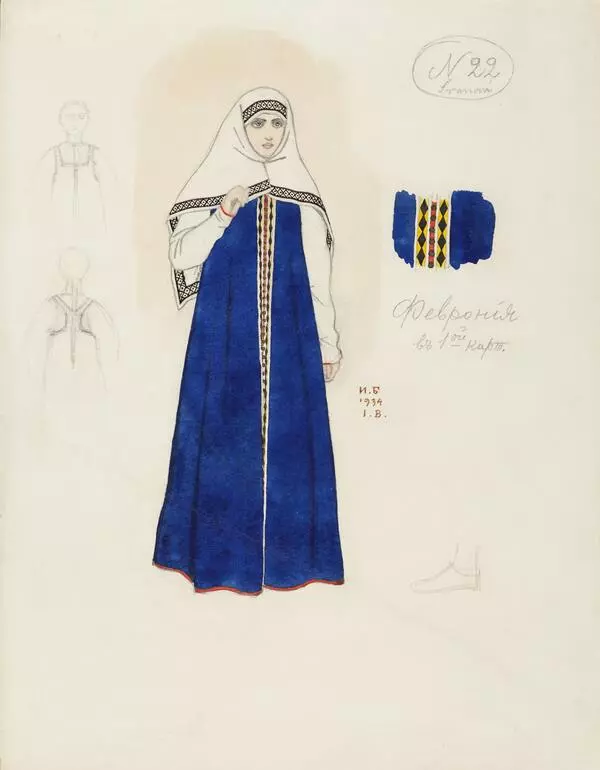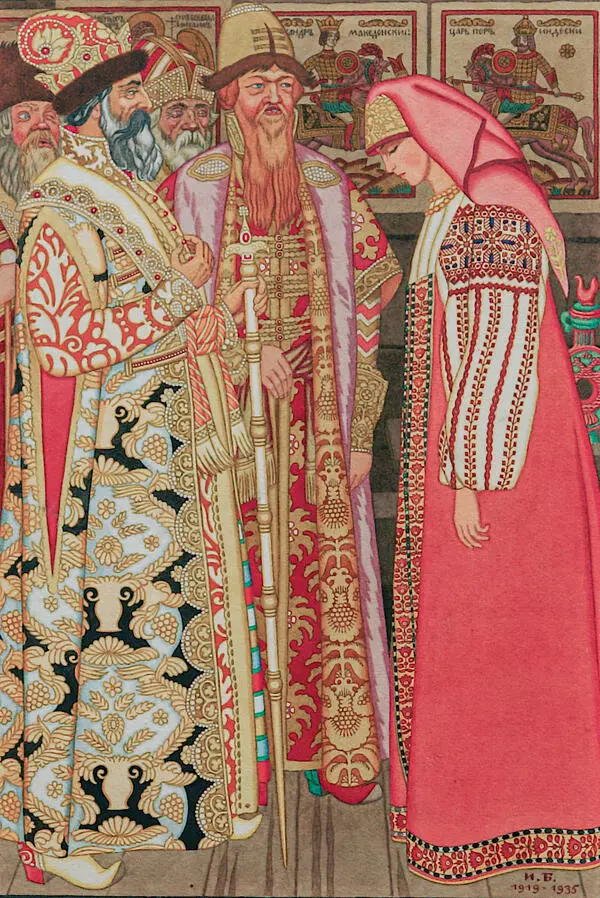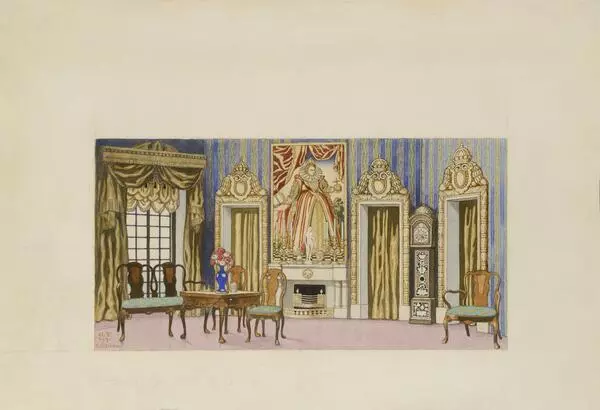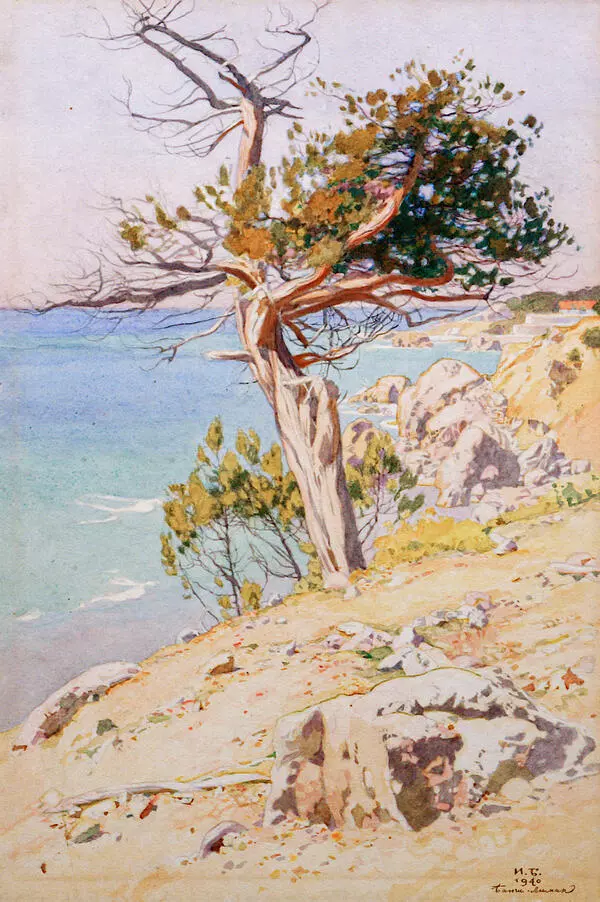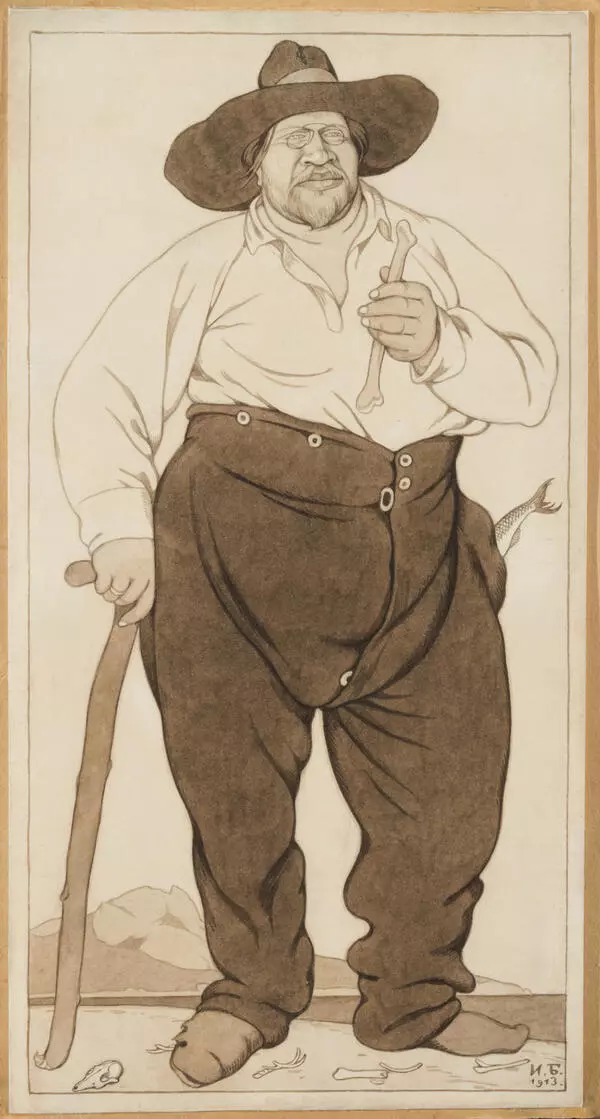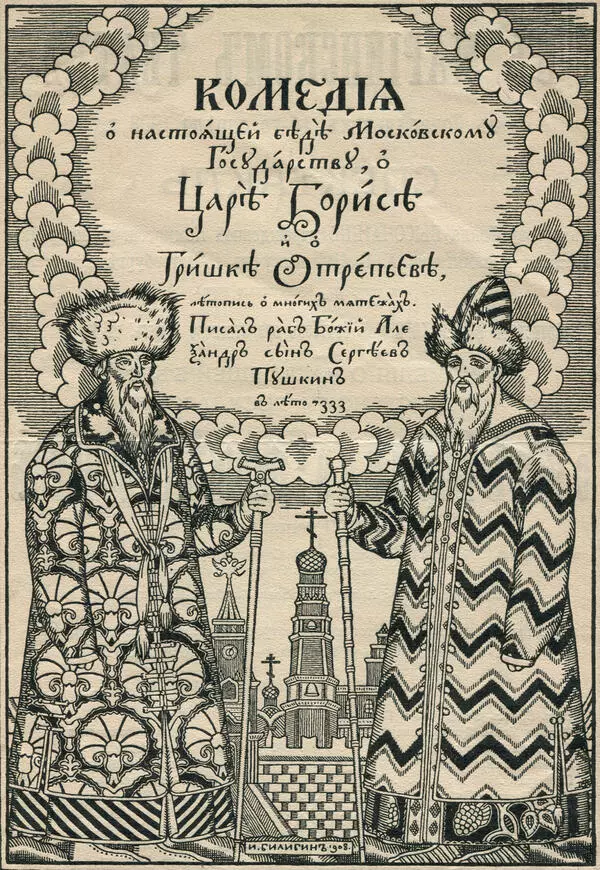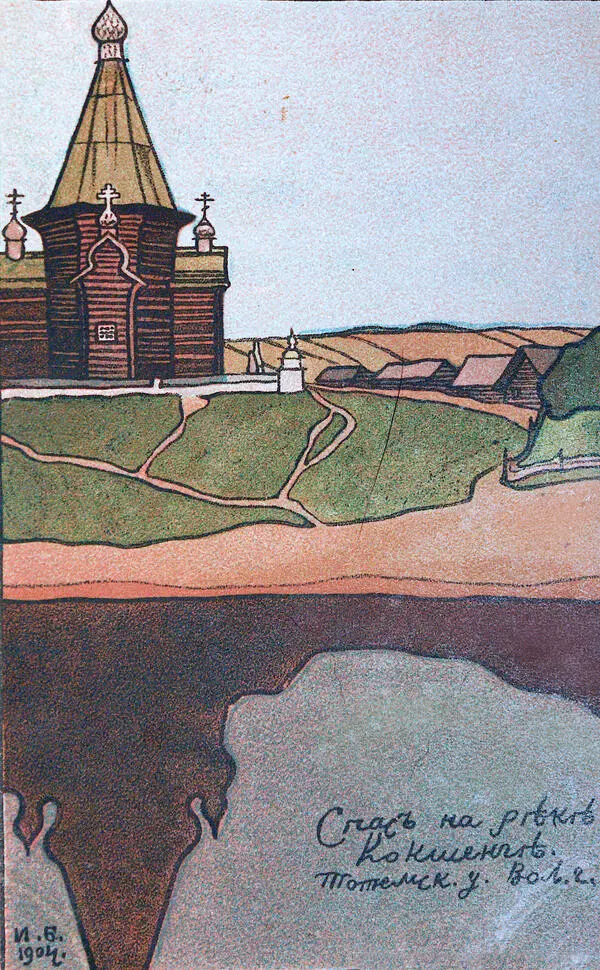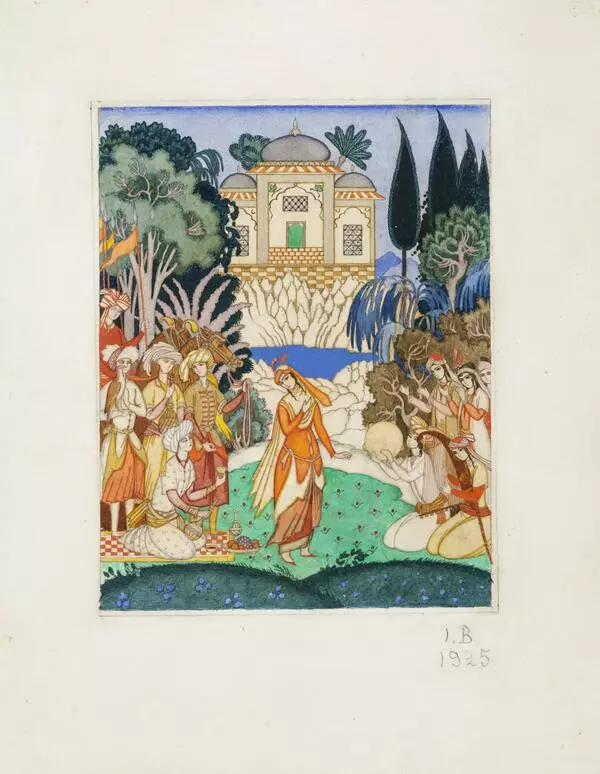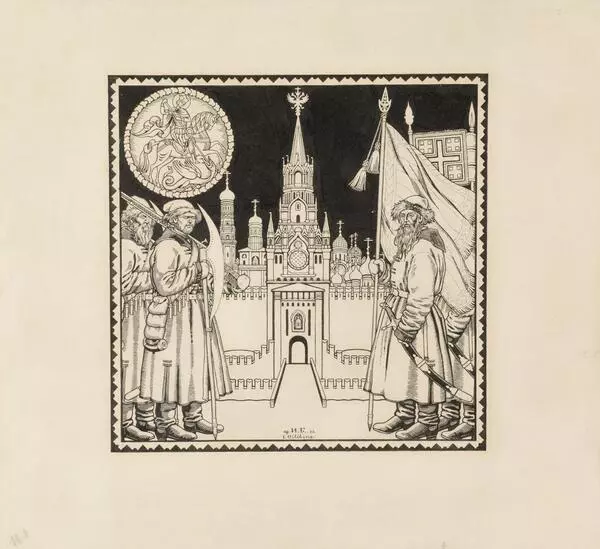In 1908, the famous Russian painter Ivan Bilibin created sketches of stage design for Nikolay Rimsky-Korsakov’s opera “The Golden Cockerel”. In 1910, the Expedition for the Procurement of State Papers published the most famous edition designed by the artist — “The Tale of the Golden Cockerel”. The entire series of sketches was immediately acquired by the Tretyakov Gallery.
Bilibin created an extremely compact and concise book. It has only four single page illustrations, a two-page spread, a panel and the pictures at the end of chapters. This is the minimum design that can make up a book. The principle of conveying not the action, but a certain emotional state, which was previously characteristic of Bilibin’s style, has been completely discarded. Each illustration corresponds to a specific plot scene. Even if you are not familiar with Pushkin’s fairy tales, the plot itself will become clear by simply looking at Bilibin’s illustrations. This approach indicates that the artist very accurately understood the uniqueness of the fairy tale: Pushkin himself does not so much describe the characters, as he makes them act. The action unfolds rapidly, passing through a number of crucial moments. These are the important scenes that Bilibin depicted.
The four single page illustrations are four acts of a play, the spread is an interlude, the panel is a prelude, the pictures at the end of chapters are the finale. The book is compiled as a classic theatrical performance. Bilibin’s illustrations can also be interpreted from the point of view of easel art, however, due to the graphic style of Bilibin’s watercolors, the illustrations stay in the book. Here the artist reached the pinnacle of mastery. His line is precise, expressive and ornamental at the same time. The principle of free will prevails in it.
Bilibin called his watercolors “ennobled lubok prints” (the lubok is a form of folk graphic art in which an artist creates a woodcut, makes prints from it, and then paints them by hand). However, this is not just an elevated print, this is a watercolor, painted in a specific graphic manner. By its nature, it is close to folk woodcut prints, but at the same time it is definitely the artist’s unique vision.
There are only a few illustrations in the book designed by Bilibin. But its format, the scale and nature of the illustrations, and the calibrated graphic language produce an effect of monumentality, which is achieved not by a simple increase in the size of the drawing, but by building a truly “high form”, with meaning and significance.
Bilibin created an extremely compact and concise book. It has only four single page illustrations, a two-page spread, a panel and the pictures at the end of chapters. This is the minimum design that can make up a book. The principle of conveying not the action, but a certain emotional state, which was previously characteristic of Bilibin’s style, has been completely discarded. Each illustration corresponds to a specific plot scene. Even if you are not familiar with Pushkin’s fairy tales, the plot itself will become clear by simply looking at Bilibin’s illustrations. This approach indicates that the artist very accurately understood the uniqueness of the fairy tale: Pushkin himself does not so much describe the characters, as he makes them act. The action unfolds rapidly, passing through a number of crucial moments. These are the important scenes that Bilibin depicted.
The four single page illustrations are four acts of a play, the spread is an interlude, the panel is a prelude, the pictures at the end of chapters are the finale. The book is compiled as a classic theatrical performance. Bilibin’s illustrations can also be interpreted from the point of view of easel art, however, due to the graphic style of Bilibin’s watercolors, the illustrations stay in the book. Here the artist reached the pinnacle of mastery. His line is precise, expressive and ornamental at the same time. The principle of free will prevails in it.
Bilibin called his watercolors “ennobled lubok prints” (the lubok is a form of folk graphic art in which an artist creates a woodcut, makes prints from it, and then paints them by hand). However, this is not just an elevated print, this is a watercolor, painted in a specific graphic manner. By its nature, it is close to folk woodcut prints, but at the same time it is definitely the artist’s unique vision.
There are only a few illustrations in the book designed by Bilibin. But its format, the scale and nature of the illustrations, and the calibrated graphic language produce an effect of monumentality, which is achieved not by a simple increase in the size of the drawing, but by building a truly “high form”, with meaning and significance.
